Estimated reading time: 9 minutes
Whenever I think of post-apocalyptic survival, I think of one of my all-time favorite modern-day survival movies: Goodbye World. This highly realistic film follows a group of friends and family that band together during a catastrophic breakdown of modern America.
In the beginning, the group is getting along just fine as they hunker down in the main character’s off-the-grid home that is prepped with a garden, chickens, medicine, and a generous food supply. However, it doesn’t take long for their ill-equipped neighbors to learn about their emergency stockpile and desperately make a move to violently raid their supplies.
The utterly feasible sequence of events in this movie shines a light on the importance of creating a hidden emergency food supply on the homestead. It’s easy to raid cupboards, freezers, and basements full of canned goods, but strangers will have no clue where to look for your emergency stash.
Check out these clever places to hide and store your food reserves so that in case desperate civilians do raid come to your stockpile, you’ve got plan B set in place.
Want to save this post for later? Click Here to Pin It On Pinterest!
1. In the Attic, Crawl Space, or Under the Stairs
No looter is going to pull down a ladder in order to search your attic for food. These spaces are out of the way, easy to organize, and convenient to access when you know of their existence.
Things to Consider: Attics and crawl spaces can become hot and humid so you don’t want to store food here that is temperature-dependent. Also, don’t overload the structure with too much weight otherwise you might experience a collapse.
Best Food for this Space: Stick some canned food like beans, tuna, corn, and soup in the attic or crawl space. Jugs of water are equally fit to be stored in crawl spaces and under the stairs, but avoid the attic because of their weight.
2. Nooks and Crannies around the House
Take that hollow lamp, those empty shoe boxes, and the hollow ottoman in the living room and stuff them with Mylar Bags! These food storage bags keep moisture, light, and air from affecting your food and significantly prolong the shelf life of your stash. Learn more about Mylar food storage here.
Things to Consider: Don’t skip the oxygen absorbers—these are the key to keeping your food fresh. Also, don’t forget to label each Mylar Bag with its contents, the date of packaging, and the estimated date of expiration.
Best Food for this Space: Grains, rice, and beans can reach a shelf life of up to 30 years in Mylar Bags! These bags are also quite malleable and will fit in oddly shaped spaces.
3. Empty Luggage
Storing survival rations in empty luggage is a double-win in that you can optimize space in your home and if you need to evacuate in a hurry, your food is all ready to go.
Things to Consider: If your luggage is a soft duffle bag rather than a hard suitcase, your food is prone to being smooshed, cracked, or broken.
Best Food for this Space: Pack snacks and rations that come in cardboard boxes or plastic packaging such as oatmeal packets, granola bars, fruit roll ups, and spices like salt and sugar.
4. Underground Irrigation Pipes
Go to your local hardware store where you can purchase large irrigation pipes to install underground around your property. These pipes come with lids to secure an airtight seal perfect for preserving food.
Things to Consider: Irrigation pipes in the ground can keep food quite cool and keep light out of the storage space to prolong shelf life.
Best Food for this Space: Any food that goes in a Mylar Bag and doesn’t require rotating is ideal, as you won’t have casual access to these pipes. Mylar Bags with dried fruits, oats, and spices are best. Here, you can also store fats like protein-packed peanut butter or multipurpose oils like coconut oil in the airtight containers.
5. Semi-Underground Storage Trunk
When fitting a semi-underground storage trunk in the earth, you’ll want to dig a hole that is deep enough to conceal its sides while leaving you access to its lid. The hole should match the approximate depth of the trunk. Then, you can cover the top of the lid with leaves, branches, or moss.
Things to Consider: The point of having a semi-buried food storage container is to allow you easy access to its contents in order to rotate food based on their shelf life.
Best Food for this Space: Canned food that is susceptible to light damage is best for this underground food storage. Canned jams, sauces, soups, and pickles with 1-3 year shelf lives will do well here.
6. 5-Gallon Buckets in the Garage or Shed
Store some unsuspecting 5-gallon buckets in the garage or work shed along with your rakes, brooms, and everyday work tools. When in search of food and rations, looters won’t show any interest in this area.
Things to Consider: Make sure you package the gallon buckets in a clean space, away from your tools and machines so that your food isn’t tainted! Label the bottom of the buckets with what food you’ve stored in the bucket and when. Throw some oxygen absorbers in there as well!
Best Food for this Space: You can have a total gourmet line-up waiting for you with gallon bucket food storage. Store pasta, sugar, rice, popcorn, beans and more in your buckets. You can dip into these food rations from time to time in order to keep the stash fresh, replacing what you’ve eaten with new products. Just stay away from high-fat food products that can dry out in this environment.
7. DIY Furniture Storage
Are you handy with a hammer and nails? Why not create your own desk with hollow legs or your own couch with a false bottom for concealed food storage? When you control the space, anything is possible in terms of hiding emergency food.
Things to Consider: Build furniture that you won’t have to move often or that isn’t heavily used. A chair in the foyer is used less than the chair at the kitchen table, and your daughter's crib typically stays put.
Best Food for this Space: Go with snacks! Stuff some beef jerky, dried fruit, powdered drinks, and candy in these spaces. These snacks tend to be more flexible and thus, better candidates for unconventional spaces.
8. Laundry Room
Your laundry room likely has a lot of space that’s not being used yet. Even if your washer and dryer are up against the wall, there should be some space behind them that you can store food in (or if not, you can create a larger gap in between the machines and the wall).
Remember that when burglars or looters come into your home looking for food and supplies, they’re going to want to get in and out of there as fast as they can. Since laundry rooms are not typically known for storing valuable items, it’s an ideal location in the home for storing food or other valuables.
Things to Consider: The most important factor to remember is that your laundry room needs to have plenty of ventilation so you don’t run the risk of moisture running your food. To be extra sneaky, store your food in plastic containers. This way even if anyone does take a peek into your laundry room your food will be hidden in plain sight.
Best Food for this Space: The best kinds of foods to store in the laundry room are canned foods where the cans are able to properly withstand moisture.
9. Incorrectly Labeled Storage Bins
This is a classic example of hiding your emergency food in plain sight. Just take storage bins (or cardboard boxes or plastic containers) and then label them as something that no one robbing your house should have any interest in taking (such as ‘decorations’ or ‘family photos’) to create a false trail.
Things to Consider: As with any food preps, you’ll want to check on your ‘false trail’ bins intermittently to make sure the food is still good quality and has not been exposed to moisture.
Best Food for this Space: Canned goods or Mylar bags filled with beans or rice are good choices. Just fill your bins or containers with as many bags or cans as you can.
10. Under the Bed
It’s surprising how many people won’t make storage use out of the space under the beds in their homes. Simply take cardboard boxes and fill them up with foods such as canned goods, and then
Things to Consider: Make sure that any pets you have in the house, such as cats, don’t crawl under the bed and get into the food.
Best Food for this Space: The best type of food to store under your bed is canned goods in small cardboard boxes that you can easily slide under your bed.
11. Behind Books on the Bookshelves
The idea here is simple: just tuck certain foods behind books on your bookshelf. After all, it’s not likely that any burglars or looters who break into your house are going to be interested in the reading materials you have on the shelf.
Things to Consider: To make sure the food stays hidden, consider stacking some books horizontally over the vertical books. This will help ensure that any corners of food packaging protruding over a row of books won’t be easily noticed.
Best Food for this Space: Since you’re very limited with space with this option, you’ll have to stick to smaller food packages that don’t take up a lot of space. Think smaller Mylar bags filled with rice or beans.
Note that it is crucial not only to have emergency provisions hidden in your home, but also around your property so that if you need to flee your house for whatever reason, there are stockpiles all around you.
Sure, going to great measures to hide and store your food might look a little…paranoid. But let’s be real, you’ve got good reason to be paranoid. The economy is shifty, our government is picking fights with unstable dictators that threaten the country with nukes, our cities are becoming increasingly crowded, and the list goes on.
So when the very likely scenario where shit does hit the fan occurs, you and your family won’t have to worry about food and instead, can focus on heavier aspects of survival.
Like this post? Don't Forget to Pin it On Pinterest!
You May Also Like:

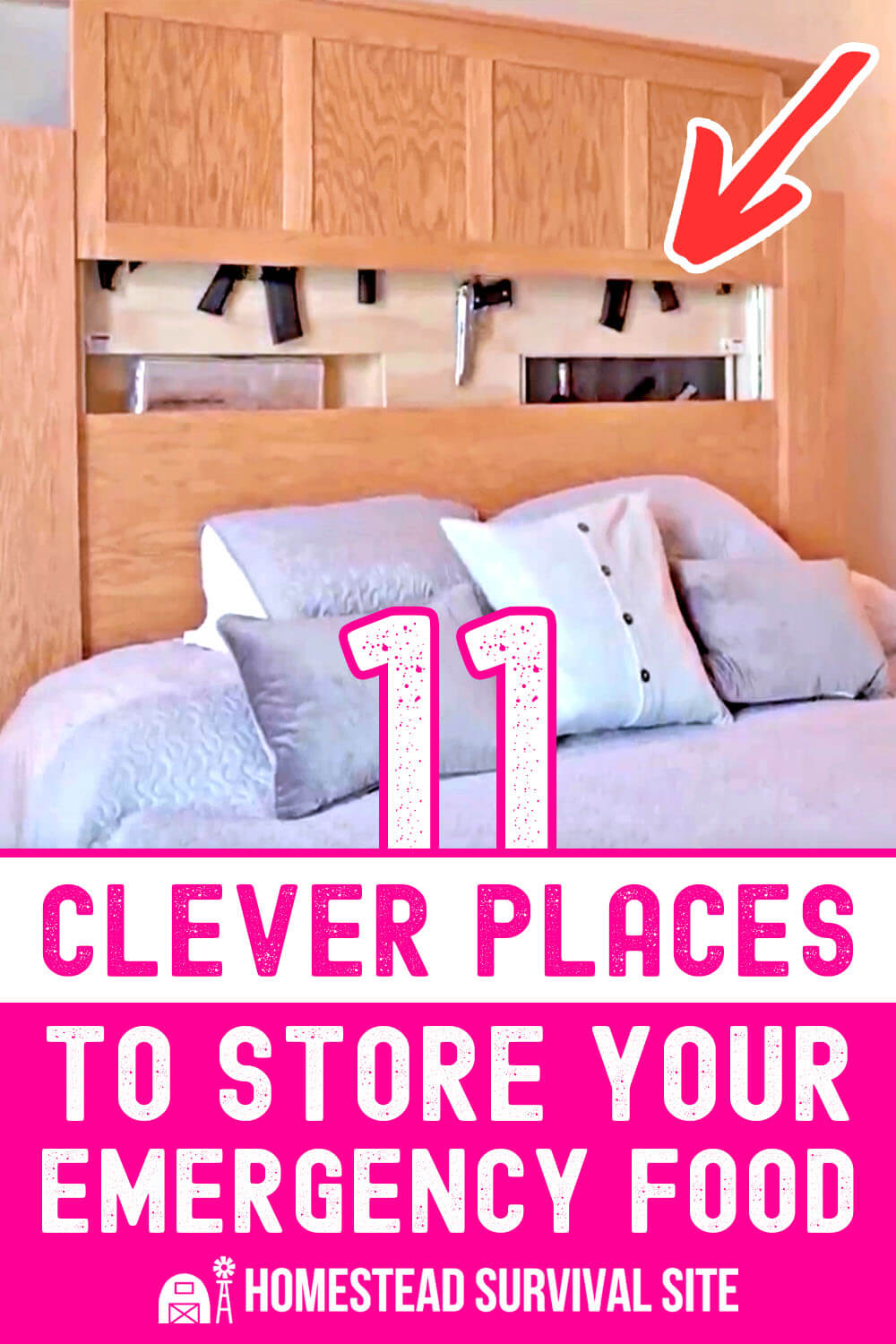


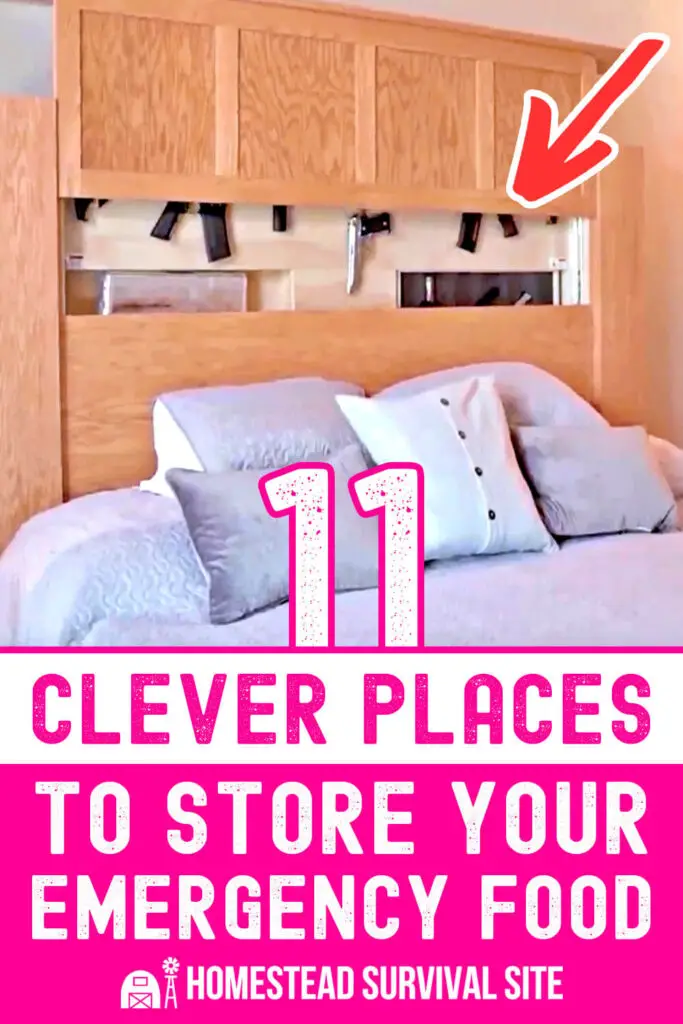


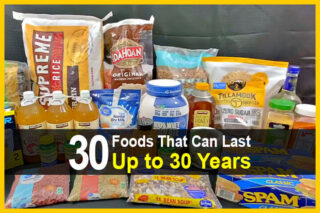
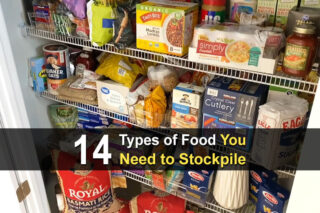
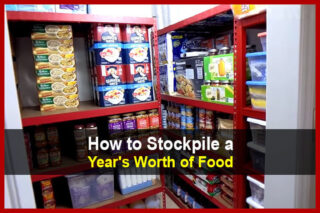

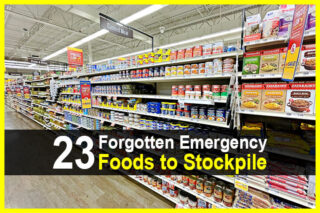


The real reason to hide preps is government, especially local government. In an emergency, they will be the first to ‘redistribute’ your food, at least to themselves. Keep quiet, stay gray, but if that fails, having hidden food may save you.
If you want to provide food in an emergency to others (a good and Godly thing), anonymous donations to local food charities and churches would be the way to go. Remember the Eleventh commandment – don’t get caught doing good, you will be punished.
Another hiding place for long term foods (5 gallon buckets of grain and such) would be behind a false wall in a bedroom. Stack them up, frame in front, drywall and paint the room afterwards. That would be proof against all but the most invasive searches, but correspondingly the most difficult to access. If your skills are up to it, a secret door to the stash could be made (my carpentry isn’t up to that one).
That’s actually a great idea I just demolished and rebuilt 2 rooms in my house finished up about 2 weeks ago and now that I read your comment I’m kicking myself for not filling the space behind the drywall with some of my preps seems a good place to store an extra firearm as well as ammo. In case confiscation if guns ever happens. Great idea. Just wish I woulda read it sooner. Maybe it’s time to take out a few more walls lol
MORNING from NORTH ESTREN WA. ! THIS house I have has a full basement and a lot of storage ! I store water FOOD and GALS AND GALS of KEROSENE (in a pinch I can use diesel ) where I live I have a generator for power
You are off to a good start, but you need a hidden room in the corner of your basement, with a flush doorway, with a hinged metal cover. Make it about 4 foot high, 30″ wide. Then you can hide the door with a bookcase. I have mine on rollers, and move it to cover the door, from the inside or outside. I also built the walls from concrete blocks, all the way to the ceiling. All your food and water, and other supplies are safely inside. But don’t show it to anyone!
Your first paragraph hit the nail on the head. Bulls eye.
Any churches will be locked to stop that from happening. If you are a christian and you have food available, keep quiet and be a sort of robin hood but DO IT QUIETLY. so the “Authorities” don’t know about it.
The rest of what you’ve said is plain old common sense advice and wisdom.
The authorities may be able ot scan the walls if they think you are hiding something. So when they start throwing their weight around be as difficult as possible, and start cursing them when they take what you have from the pantry.
You will have expressed your displeasure at what they are doing, but they probably won’t care.
I have a question. The space behind my air filter is a pretty big area and would hold probably three five gallon buckets if I stacked them and left plenty of room for a “draw” of the air. Do you think this would be a good place and please give an example of what food to store
Ant dehydrated foods, pasta, or foods in glass jars will keep well. Also foods like powered eggs, and dried milk, coffee, teas, and whiskey, wines will keep.
Another thing to consider is to store in multiple places. I lost everything, well hidden in a underbed storage system, when our town burned down in a forest fire. Sadly just a week before we moved the last 1/3 of it from a storage shed to our newly organized garage. The storage shed business was one of the few that made it.
Hidden doors/rooms are surprisingly easy to make. The downside is that easy to make can equal easy to find, should invaders throw a fit while searching they could accidentally find your hidden room simply by trying to trash your place…. aaaand, if your desperate neighbors know your handy they may go looking for these spaces too.
Anyway, to hide a room simply hide the door behind book shelves, having two or three bookshelves beside each other will make it less conspicuous, simply pick one of the shelves to screw onto the door, remove door handles first. Fill bookshelves like normal. Boom, hidden room. Just make sure all your bookshelves sit flush with the walls and floors and cover any trim from around the door frame. Clearly you need bookshelves with backs to hide the door. The key to this is having large enough bookshelves to cover the door completely, either store bought or made at home. Honestly home made is a custom job, they are heavy, they look heavy and very few individuals are willing to deal with them, it makes them a perfect fit. The downside is that without the door handles (and thus internal locking mechanism/control) the door no longer shuts or locks, making it a push/pull door… aka easier to find by mistake. There’s a reason why hidden rooms are often found in a study, behind the wall made of bookshelves. Who, in a starving frenzy, is going to look in the study/office filled with books for food and water? You can also hide built in shelves in your home behind art, just like an old school safe. You clearly want to have lots of art hanging on the walls to make it all blend in. But again, someone stealing from you is going to the obvious place, not wasting time looking behind art and bookshelves any more than they would think to look in your sofa. The food in your kitchen now acts like the decoys for your hidden stashes.
This is great advice! It’s even easier to hide a wall safe or hidden compartment with tapestries. I have several of them.
I think you should actually heavy books just in case they get smart and check the book shelves. another place people forgot to mention: garbage bins. it can be the bin in your house but I am talking about those big black one you put outside once a week. put your food at the bottom and then put a lot of nasty stuff on top lol. will they be willing to search there? I dont think so.
I would imagine some mean gangs would after looting would burn your house down just for the fun of it.And you still have to worry about disasters that would destroy your house. Best idea is the garbage can root cellar.
In conjunction with finding clever ways to hide food and supplies, it is also important when it comes to possible theft or confiscation, to have things that people expect to find in the usual places that they would be kept. I’d make sure to have enough things on pantry shelves, in cupboards, cabinets, and all over the house and garage so it does not appear that there is anything out of place or unusual.
I would hide the survival related items such as your good quality flashlights, lanterns, firearms, fire starting devices, radios, camo clothing, and even certain books and so on otherwise they might cause people to see you as well prepared or well outfitted with things they want for themselves or don’t want you to have. And these are things we want to keep safe.
Cheaper items are not going to elicit as much interest as better quality, higher priced items. And as always, don’t tell anyone about your all of your plans, what you have, how many or how much and where you keep it.
Any storage ideas for hiding necessary food & prepping items in a small apartment besides my furniture? Limited cupboard space also.
Well, I have 5gal buckets stacked wherever they fit out of sight. I have a single row, stacked 2 high, along the wall behind my sofa. I covered them in a bedsheet , the color of which doesn’t clash. Casual visitors won’t think much of it at all. It’s even got throw pillows on top.
Thanks for telling us your hiding places. We’ll be sure to add these to the list when we come to confiscate your food and resources for the greater good, carbon tax, military and of course your food donation to Ukraine, SAID the powers that be.
Since Covid, I’ve been using the bookshelf option and exactly as written, stacking some books horizontally in top. I have six bookcases so lots of space. I thought it was an original idea lol. I can’t use most of the other options as I have extremes of temperatures, Up to 30C in summer and -30 in winter. That’s the most space I have in the house so I make good use of it.